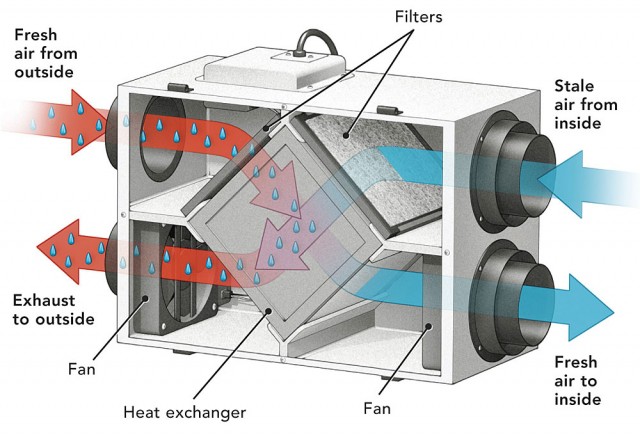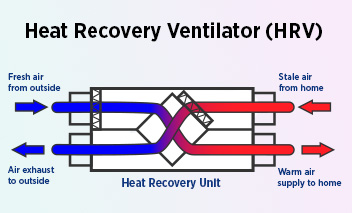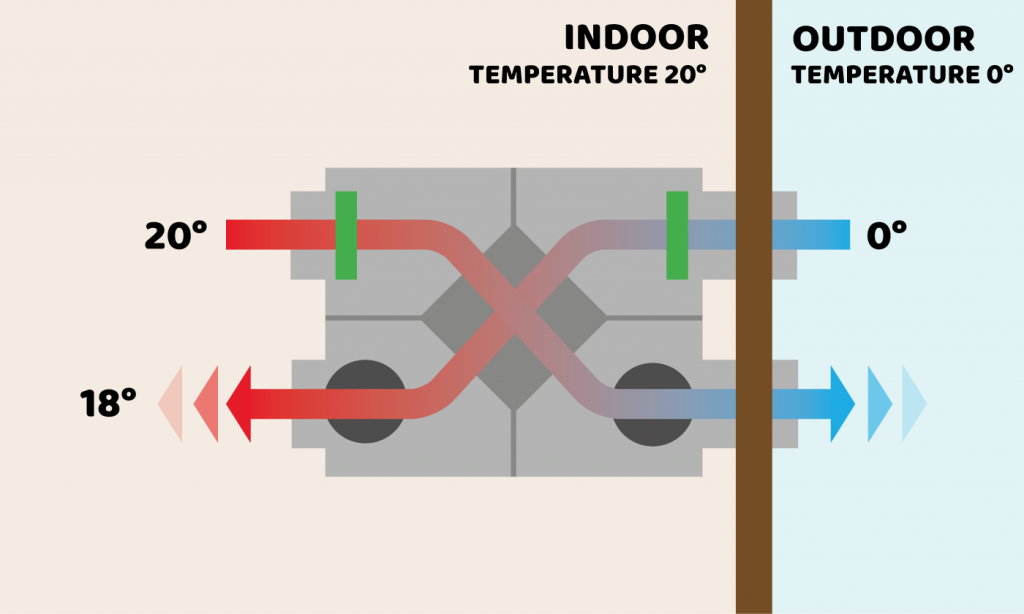Exploring the Advantages of Heat Recovery Ventilation for Power Efficiency in Residences
Heat Recovery Ventilation (HRV) systems use home owners a useful approach to boosting energy efficiency. By recovering warmth from outward bound air, these systems can substantially lower heating & cooling costs. In addition, they provide a stable supply of fresh air, enhancing indoor air top quality and comfort degrees. As homeowners take into consideration sustainable alternatives, recognizing the nuances of HRV systems ends up being increasingly essential. What elements should one examine before making such an investment?
Recognizing Heat Recovery Ventilation Equipments

Exactly How HRV Boosts Indoor Air High Quality

Power Financial Savings: The Economic Benefits of HRV
Optimizing energy efficiency, heat recovery ventilation (HRV) systems provide significant financial benefits for homeowners. By recovering and recycling warm from exhaust air, HRVs considerably decrease cooling and heating prices. This technology can cause energy cost savings of up to 30%, depending on environment and use patterns. Home owners commonly notice minimized utility bills soon after installation, making HRVs a monetarily sensible investment in time. In addition, many regions give incentives or discounts for energy-efficient upgrades, additionally boosting the financial allure. As power costs remain to increase, the cost-effectiveness of HRVs ends up being progressively clear. Overall, the incorporation of HRV systems not just advertises energy efficiency but likewise adds to lasting monetary cost savings for households.
The Ecological Impact of Heat Recovery Ventilation
A substantial environmental benefit of heat recovery ventilation (HRV) systems exists in their capacity to lower total power usage. By recovering warmth from exhaust air and transferring it to inbound click here to read fresh air, HRV systems decrease the need for energy-intensive home heating and cooling down methods. This reduction in power need adds to reduce greenhouse gas emissions, as less site nonrenewable fuel source is required to keep comfy interior temperature levels. Furthermore, HRV systems enhance indoor air quality by successfully exchanging stale air with fresh outside air, lowering dependence on mechanical air conditioning systems that can damage the atmosphere. In general, the execution of HRV systems supports sustainable living practices and lines up with international efforts to combat environment adjustment by promoting energy efficiency in domestic setups.
Choosing the Right HRV System for Your Home
Just how can home owners assure they pick the right heat recovery ventilation (HRV) system for their demands? Initially, they must assess their home's size and layout, as these factors affect air movement demands. Next off, evaluating the system's effectiveness ratings is vital, as higher scores show better performance and energy cost savings. Property owners need to also consider installation and upkeep prices, comparing different brands and designs for worth. Furthermore, it's crucial to evaluate noise degrees, as some systems operate even more silently than others. Consulting with heating and cooling experts can give customized suggestions based on details home problems. Lastly, taking a look at customer evaluations and warranties can help in making an educated decision, ensuring that the selected HRV system properly additional info enhances indoor air quality and energy efficiency.
Frequently Asked Questions

Exactly how Commonly Should I Clean or Maintain My HRV System?
The frequency of cleaning or preserving a warm recuperation air flow (HRV) system commonly depends upon use and environmental elements. Typically, it is suggested to carry out upkeep every six months to assure peak performance and air high quality.

Can HRV Solutions Help Minimize Humidity Levels Indoors?
HRV systems can successfully reduce indoor humidity levels by trading stagnant, damp air with fresh, drier air from outdoors. HRV Heat Recovery Ventilation. This procedure helps preserve a well balanced indoor atmosphere, boosting convenience and preventing moisture-related problems
What Is the Life expectancy of a Normal HRV System?
The life-span of a common heat recovery ventilation (HRV) system differs, usually lasting between 10 to 15 years. Routine maintenance can extend its efficiency and functional life, ensuring peak performance throughout its use period.
Exist Any Kind Of Noise Worry About HRV Solutions?
Noise worry about HRV systems can emerge, particularly from fan procedure. Many modern devices are designed to decrease audio levels, guaranteeing they operate silently while maintaining efficiency, which deals with prospective disturbances in living environments.
Can I Install an HRV System Myself, or Do I Required an Expert?
The individual contemplated whether to mount the heat recovery ventilation (HRV) system personally or hire a specialist. Typically, while DIY installment is feasible, competence guarantees proper capability and compliance with neighborhood structure codes, boosting system performance.